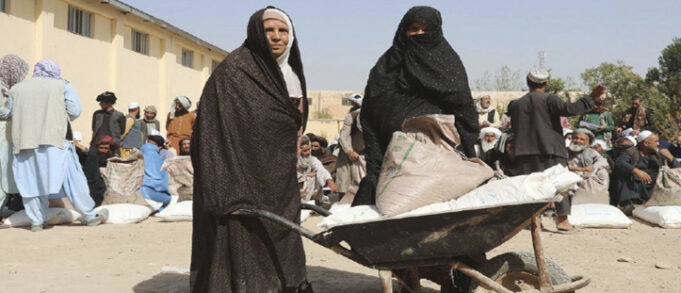Nearly 20 million people in Afghanistan—almost half the population—are facing acute hunger, humanitarians warned in a UN-backed report, published on May 9.
The latest Integrated Food Security Phase Classification (IPC) analysis for the country also revealed a pocket of “catastrophic” levels of food insecurity in the northeast, affecting thousands.
The analysis was conducted in January and February by partners who include the UN Food and Agriculture Organization (FAO), sister agency the World Food Program (WFP), and many non-governmental organizations.
Averting a catastrophe
Although humanitarian assistance helped avert a food security catastrophe over the harsh winter in Afghanistan, hunger still persists at unprecedented levels, according to the report.
Richard Trenchard, FAO representative in the country, described the food security situation as dire.
“Humanitarian assistance remains desperately important, as do the needs to rebuild shattered agricultural livelihoods and re-connect farmers and rural communities to struggling rural and urban markets across the country. Unless these happen, there will be no way out of this crisis,” he said.
The IPC was developed in 2004 to determine the severity and magnitude of food insecurity and acute malnutrition situations in a country.
Slight improvement expected
The report predicts there will be a slight improvement in food security in Afghanistan from June through November, with the number of people facing acute food insecurity dropping to 18.9 million.
This is partly due to the coming wheat harvest, which runs from May to August, as well as the scale-up in food assistance this year and increased support to agriculture.
“Food assistance and emergency livelihood support are the lifeline for the people of Afghanistan. We mounted the world’s largest humanitarian food operation in a matter of months, reaching more than 16 million people since August 2021,” said Mary-Ellen McGroarty, WFP’s country director and representative in Afghanistan.
A ‘catastrophic’ first
However, the report warned that any gains will be limited, as lingering drought and the economic crisis continue to threaten the lives and livelihoods of millions across the country.
The partners were particularly concerned that a small pocket of “catastrophic” levels of food insecurity—IPC 5, the highest phase on the scale—has been detected, marking a first since the scale was introduced in Afghanistan in 2011.
More than 20,000 people in Ghor province, located in the northeast, are facing catastrophic levels of hunger resulting from a long period of harsh winter and disastrous agricultural conditions.
Ukraine war pressures
The report said that although the upcoming harvest will bring some relief for millions, that relief will only be short-term for many.
Fallout from the war in Ukraine continues to put pressure on Afghanistan’s wheat supply, food commodities, agricultural inputs, and fuel prices.
Furthermore, access to seeds, fertilizer and water for irrigation is limited, labor opportunities are scarce, and people have incurred enormous debts to buy food over the past few months.
Supporting people and agriculture
FAO and WFP continue to scale up their programs across Afghanistan.
“We are working with farmers, millers, and bakeries, training women and creating jobs to support the local economy. Because the people of Afghanistan would much prefer jobs; women want to be able to work; and all girls deserve to go to school,” said Ms. McGroarty of WFP.
“Allowing the economy to function normally is the surest way out of the crisis, otherwise suffering will grow where crops cannot,” she added.
WFP has reached more than 16 million people in Afghanistan so far this year with emergency food assistance, while also supporting local markets, and working with retailers and local suppliers.
The agency also continues to invest in skills training and climate adaption projects so that families can cultivate their land and grow their own food.
Meanwhile, FAO continues to ramp up assistance to farmers and herders in rural areas in Afghanistan.
The UN agency will assist more than nine million people this year through a range of interventions that include support for crop, livestock and vegetable production; cash transfers, and the rehabilitation of vital irrigation infrastructure and systems. (UN News)













